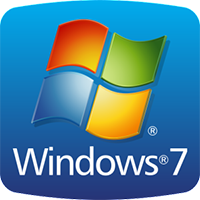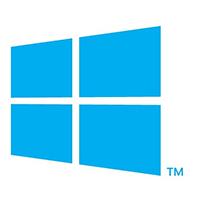 On April 8 2014, Microsoft officially pulled support for the aging XP operating system. This may be a problem for some businesses as there are still a surprising number using the 13-year-old OS. There may be reasons why these businesses have yet to upgrade, perhaps they are still happy with the service, but with a lack of support XP will become a liability.
On April 8 2014, Microsoft officially pulled support for the aging XP operating system. This may be a problem for some businesses as there are still a surprising number using the 13-year-old OS. There may be reasons why these businesses have yet to upgrade, perhaps they are still happy with the service, but with a lack of support XP will become a liability.
After the cutoff date, Microsoft will no longer release any patches or updates for XP, even if critical vulnerabilities are found. That’s a clear reason to move on, as Microsoft has no intention of supporting users of its archaic OS. There is however an exception for larger corporate entities that are willing to pay $200 per computer to get a years extension of “premier” support. However, this approach will definitely be costly and the extension lasts for only one year. In the scheme of things it works out better for businesses to simply drop XP and migrate to another OS.
If you needed any other motivation to upgrade your OS then remember that cyber attackers will be able to target vulnerabilities in Windows XP and those flaws will never be patched. Users will have no ability to defend themselves, with the only option being to upgrade to a new OS. Either a business can let itself be forced into upgrading its IT systems or it can do it voluntarily and avoid leaving its critical infrastructure exposed.
The other thing that businesses should fear is that once support is pulled there is likely to be a huge jump in the number of attacks targeting XP users. This is increasingly likely as more flaws in the XP OS are revealed by related fixes to Windows Vista, 7 and 8.
Effectively businesses have to migrate at some point so you might as well do it sooner rather than later. Don’t wait for attackers to wreak havoc with your company’s digital workflow, instead upgrade now. If you’re worrying about the logistics, don’t. Here’s a guide to ensure that any migration from Windows XP goes smoothly and to plan.
Windows XP and its Users
Before starting the migration process it’s worth deciding where your business is headed. Pick an OS that’s future proof, suits the workflow and increases the productivity of your employees. Most businesses will upgrade within the Windows framework to 7 or 8, but there are other options as well. Linux is an open source OS that comes in a number of different packages, and then there is Apple (but this might mean expensive new hardware and machines). There are options, so pick yours carefully and research which one suits your business the best, not forgetting to factor in training costs if you move to a different OS.
For the purposes of this article, Windows 7 and 8 will be considered, as it’s much more likely that businesses running XP for this long will want to continue with Windows.
The Case for Windows 7
 Windows 7 is a good option and it retains many of the features that make Microsoft so familiar to users. It has the usual Windows interface, it’s well entrenched in the marketplace, and it has good support from third party software. Windows 7 is also fairly cheap and a business can buy a full installation copy of Windows 7 Home Premium for around $100. It works out cheaper than upgrading to Windows 8. So if money is driving your choice Windows 7 might be for you. However in terms of being future proof Windows 8.1 is a better alternative.
Windows 7 is a good option and it retains many of the features that make Microsoft so familiar to users. It has the usual Windows interface, it’s well entrenched in the marketplace, and it has good support from third party software. Windows 7 is also fairly cheap and a business can buy a full installation copy of Windows 7 Home Premium for around $100. It works out cheaper than upgrading to Windows 8. So if money is driving your choice Windows 7 might be for you. However in terms of being future proof Windows 8.1 is a better alternative.
It’s worth bearing in mind that Windows 7 is already more than 4 years old and mainstream support will end in January 2015. Extended support will continue until 2020 but upgrading to 7 will put you in a similar position to XP within only a few years.
The Case for Windows 8.1
 Windows 8 is now technically speaking Windows 8.1 and it requires a bit of tweaking to get many applications to run smoothly. This is due to the user interface changing pretty drastically from the “classic” Windows look that many users treasure. However this is an OS with better longevity and mainstream support for W8 will continue until 2018, and extended support until 2023.
Windows 8 is now technically speaking Windows 8.1 and it requires a bit of tweaking to get many applications to run smoothly. This is due to the user interface changing pretty drastically from the “classic” Windows look that many users treasure. However this is an OS with better longevity and mainstream support for W8 will continue until 2018, and extended support until 2023.
This week, the news has been full of the story that Windows 8.1 support will no longer be available for Windows 8.1. However, this is not as alarming as it sounds as the support will be available for Windows 8.1 Update, rather than the first version of 8.1, so don’t let the news put you off. Even if you have the initial version of 8.1, all you have to do to get the updated version is ensure that automatic updates are enabled on the machine.
Forget Vista
 Vista wasn’t an operating system that was received well and for businesses considering an OS upgrade, it’s definitely worth forgetting Vista. Mainstream support for this OS has already ended and extended support ends soon in April 2017.
Vista wasn’t an operating system that was received well and for businesses considering an OS upgrade, it’s definitely worth forgetting Vista. Mainstream support for this OS has already ended and extended support ends soon in April 2017.
For businesses really struggling to choose between 7 and 8, try listing all of the applications installed on your devices running XP, and figure out which OS supports the majority of them.
Compatibility Check
 Windows XP has been around for over a decade and the chances are that many computers still running that OS will be unable to handle either Windows 7 or Windows 8. Microsoft does offer a Windows 8 Upgrade Assistant
Windows XP has been around for over a decade and the chances are that many computers still running that OS will be unable to handle either Windows 7 or Windows 8. Microsoft does offer a Windows 8 Upgrade Assistant![]() to help users determine if their hardware can run Microsoft’s latest OS. There is no longer a similar upgrade advisor for Windows 7, but the minimum requirements for both operating systems are nearly identical.
to help users determine if their hardware can run Microsoft’s latest OS. There is no longer a similar upgrade advisor for Windows 7, but the minimum requirements for both operating systems are nearly identical.
It may be easiest to simply buy new computers that come with Windows 8 preinstalled. In effect buying a new machine is the easiest way to migrate as all it really takes is copying all of the personal files from the older machine over to the new one.
Remember that when migrating it’s a good idea to look at the account privileges and the configuration on the new OS to make sure that the settings are secure. Make sure that an IT professional is consulted to ensure that your networks are kept safe during any sort of transition.
Administrator Accounts
The type of account that your employees are using is important to bear in mind. During the XP era many owners used administrator accounts as their primary accounts and this exposed their systems to privilege-escalation attacks![]() . Don’t repeat the same mistakes on newer systems and keep regular day-to-day user accounts limited, rather than giving unnecessary administrator privileges.
. Don’t repeat the same mistakes on newer systems and keep regular day-to-day user accounts limited, rather than giving unnecessary administrator privileges.
One other point, when migrating and upgrading computer operating systems, remember to update any and all third party software to avoid compatibility issues. Don’t try and use the older versions and instead make sure that everything on your new devices, or new OS, is up to date and running smoothly.
Now that Microsoft has pulled support for Windows XP, users need to seriously consider why they are still using the OS. The security situation can only deteriorate and a full migration can take up to six months, depending on the size of the business.
Businesses need to act now to ensure safety for its data and employees when using computer infrastructure. Act speedily as your business is already behind and upgrade and migrate forwards rather than holding on to the past.


